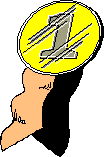BBB Revision / Examination Tactics
Back to Exam Hints
or Return
to Home Page or
Return to Tutorial 6 notes
or Return
to Tutorial 7 notes
or
Back to BBB Revision
This page is derived from the article in the Stop Press 3 Bulletin of
May 2001.
-
The exam is a test of SD206, and all the questions in the exam relate
to some part of SD206. This may seem rather obvious, but it does mean that
the answers to the questions are to be found in the course material, not
just in your general knowledge. It also means that if you do not recognise
a question immediately, you should be able to narrow down the SD206 book
to which it relates. Then a quick mental flip through the chapters should
reveal what the question is about.
-
No-one knows the whole of the SD206 course perfectly. In fact, it is quite
possible to pass the course, and even to do well on it, by missing out
two of the books in your revision. Furthermore, since there are nine essay
questions in Part 2 of the exam but only six books, it would be reasonable
to expect one question on each book and maybe a couple of questions related
to the main themes. Hence omitting to revise a few books may reduce your
choice of questions but not necessarily your chance of doing well in the
exam.
-
In choosing which books to select, play to your strengths. If you
did not like the material on vision or the material on development, drop
it. Don't feel you ought to concentrate on things you find difficult. Go
for material you like. It will be much easier and you will do much better.
-
Practice computer-marked questions. You cannot hope to revise everything
that the CME questions in Part 1 will cover, because they can be on anything
in the whole course, but practice helps you to spot distracters and also
reinforces certain facts.
-
There is no negative marking on Part 1 - i.e. you won't be penalised for
wrong answers - so if you don't know, just guess because you have nothing
to lose. Also, you will probably be able to eliminate some of the items
in the key for every question simply because they are obviously out of
place. This reduces the number of options left, so enhancing your chances
of guessing the correct one.
-
Do not agonise over the Part 1 questions. Spend
only a few minutes on each: each of them is worth less than 2% of the total
examination mark available.
-
You do not need to write out the titles of the essay questions you answer
in Part 2. You may want to, as it should help you to focus on the wording,
but you may not want to because it wastes time.
-
You may find that a topic in Part 1 is also a topic on Part 2, so that
it might provide you with some information for the Part 2 answer.
-
Some of the Part 2 questions may want you to unite two or three areas of
the course (e.g.aggression and Motivation; brain structure and behaviour)
- so watch out for that.
-
 Do
three Part 2 questions. If you are running short of time, and
are still on your second Part 2 question, start he third. It is easier
to score the first few marks on a question than the last few.
Do
three Part 2 questions. If you are running short of time, and
are still on your second Part 2 question, start he third. It is easier
to score the first few marks on a question than the last few.
-
Don't cross out your essay plan. Draw a line under it and then begin your
essay. You may put something important in your plan that you don't use
in the essay. An examiner wavering between a mark of 14 and 15, for example,
may be swayed to 15 by the contents of the plan. If the plan is crossed
out, the examiner will not read it.
-
Do not fill the whole page with writing. Leave four or five lines at the
bottom of each page so you can add in more later if you want to, or alternatively
write 0n alternate lines.
-
The script markers will read your paragraphs in the order that you tell
them to read them. For, example, if you write 'read the last paragraph
first', that is what they will do. You can change the order of what you
have written by numbering the paragraphs in the order you want them read,
which may not be the order in which they appear on the page.
-
You do not have to work through the questions in the examination paper
in the order they are printed, so you don't have to complete Part 1 before
starting to read Part 2. For example, one strategy would be to look at
the Part 2 questions first and jot down some ideas in the answer book (i.e.
brainstorm). Then you could do the Part 1 questions, continuing to jot
downideas on Part 2 as they occur to you. Then you could do the Part 2
questions properly.
-
Any question may be asked in the exam. In past years, questions
from previous papers and from the specimen paper have turned up. Once a
question very similar to a TMA question appeared. Just because a question
has come up before, don't assume that it won't come up again. So use the
TMAs and CMAs you have done, and also the Specimen Exam Paper, sensibly
in your revision.
-
Please note that the official 'assignment number' of the computer-marked
part of the exam is SD206 CMA 81, and this should be entered on
the CMA form for Part 1 of the exam. (This information is given on page
2 of the exam paper but we know that many students overlook it 'in the
heat of battle'.) However, if you forget his number of where to find it,
please do not panic: if you leave a gaping void or put in the wrong number,
the computer that marks this part of the exam will spit out your form and
somebody in Exams will put in the correct number for you.

Best wishes for the final examination.
Back to Exam Hints
or Return
to Home Page
or Return
to Tutorial 6 notes or
Return to Tutorial 7 notes
or Back to
BBB Revision



 Do
three Part 2 questions. If you are running short of time, and
are still on your second Part 2 question, start he third. It is easier
to score the first few marks on a question than the last few.
Do
three Part 2 questions. If you are running short of time, and
are still on your second Part 2 question, start he third. It is easier
to score the first few marks on a question than the last few.
